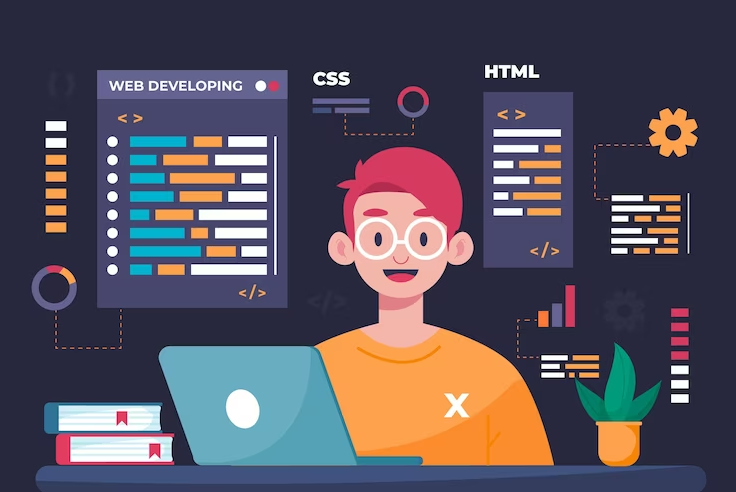CBSE Introduces Coding from Class 6
Posted On July 11, 2025

CBSE Introduces Coding from Class 6- Cultivating Future-Ready Innovators
In a forward-thinking initiative aligned with the National Education Policy (NEP) 2020, the Central Board of Secondary Education (CBSE) has firmly established coding as a foundational skill, introducing it into the curriculum for students starting from Class 6. This strategic move, which began its phased implementation in the academic session 2021-22 and has been progressively strengthened, aims to equip young learners with critical 21st-century competencies, fostering computational thinking, problem-solving abilities, and an innovative mindset from an early age. It marks a significant departure from traditional rote learning, moving towards a more application-oriented and future-focused educational framework.
The rationale behind introducing coding at such an early stage is deeply rooted in preparing students for a world increasingly dominated by technology and artificial intelligence. Coding is not merely about writing lines of text for computers; it's a creative activity that instills a unique way of thinking. It teaches students to break down complex problems into smaller, manageable steps (decomposition), identify patterns, develop logical sequences of actions (algorithms), and systematically find solutions. These fundamental principles of computational thinking are highly transferable and beneficial across all disciplines, from science and mathematics to arts and humanities, empowering students to approach challenges with a structured and analytical mindset.
For students in Classes 6 to 8, the CBSE curriculum initially focuses on introductory concepts through engaging and accessible methods. Much of the early learning leverages block-based coding platforms like Microsoft MakeCode and Scratch. These visual programming environments allow students to drag and drop code blocks, creating sequences and programs without needing to master complex syntax. This gamified approach makes learning intuitive, fun, and highly interactive. Students can create simple animations, design basic games, or even control virtual characters, providing immediate feedback and a tangible sense of accomplishment, which is crucial for maintaining engagement in young learners.
The curriculum is meticulously designed to build a strong foundation. For example, the Class 6 coding handbook introduces concepts like variables, conditional statements (if-then-else logic), and loops through practical examples and hands-on activities. As students progress to Classes 7 and 8, the complexity gradually increases, potentially incorporating elements of Artificial Intelligence (AI) and Data Science, along with introductions to text-based programming languages like Python in later grades. The emphasis remains on project-based learning, where students apply theoretical knowledge to solve real-world problems or create their own digital tools, fostering creativity and a sense of ownership over their learning.
The alignment with NEP 2020 is a key driver for this initiative. The NEP emphasizes a holistic, multidisciplinary, and flexible curriculum that promotes critical thinking, creativity, and experiential learning. Introducing coding from Class 6 is a direct manifestation of this vision, enabling students to become active creators of technology rather than just passive consumers. The policy also advocates for skill-based education and preparing students for the demands of the 21st-century job market, where digital literacy and computational skills are becoming as essential as traditional literacy and numeracy.
The benefits of early coding exposure extend beyond purely technical skills. It significantly enhances problem-solving abilities, as students learn to debug errors and refine their code. It nurtures creativity and innovation, empowering children to bring their imaginative ideas to life in digital forms. Persistence and resilience are also cultivated, as students learn that trial and error are integral to the coding process, teaching them not to give up at the first sign of failure. Furthermore, collaborative coding projects can boost teamwork and communication skills, preparing them for real-world professional environments.
However, the successful implementation of this ambitious program is not without its challenges. One of the primary hurdles is ensuring that all schools, particularly those in rural or less developed areas, have the necessary infrastructure, including functional computer labs, reliable internet connectivity, and adequate computing devices. Equally crucial is the availability of trained and qualified teachers. While CBSE, in collaboration with partners like Microsoft, has developed handbooks and resources, ongoing professional development and training programs for educators are vital to ensure they are confident and competent in teaching these new subjects effectively. Bridging the digital divide and equitable access to these learning opportunities remain paramount.
Despite these challenges, the introduction of coding from Class 6 by CBSE represents a transformative step in Indian education. It reflects a proactive approach to preparing the next generation for the global digital economy. By instilling these foundational skills early, India is poised to cultivate a pool of young innovators, critical thinkers, and problem-solvers who can contribute significantly to technological advancements and economic growth. This visionary move is expected to not only boost digital literacy across the nation but also position Indian students competitively on the global stage, ready to shape the future of technology rather than merely adapt to it.
In a forward-thinking initiative aligned with the National Education Policy (NEP) 2020, the Central Board of Secondary Education (CBSE) has firmly established coding as a foundational skill, introducing it into the curriculum for students starting from Class 6. This strategic move, which began its phased implementation in the academic session 2021-22 and has been progressively strengthened, aims to equip young learners with critical 21st-century competencies, fostering computational thinking, problem-solving abilities, and an innovative mindset from an early age. It marks a significant departure from traditional rote learning, moving towards a more application-oriented and future-focused educational framework.
The rationale behind introducing coding at such an early stage is deeply rooted in preparing students for a world increasingly dominated by technology and artificial intelligence. Coding is not merely about writing lines of text for computers; it's a creative activity that instills a unique way of thinking. It teaches students to break down complex problems into smaller, manageable steps (decomposition), identify patterns, develop logical sequences of actions (algorithms), and systematically find solutions. These fundamental principles of computational thinking are highly transferable and beneficial across all disciplines, from science and mathematics to arts and humanities, empowering students to approach challenges with a structured and analytical mindset.
For students in Classes 6 to 8, the CBSE curriculum initially focuses on introductory concepts through engaging and accessible methods. Much of the early learning leverages block-based coding platforms like Microsoft MakeCode and Scratch. These visual programming environments allow students to drag and drop code blocks, creating sequences and programs without needing to master complex syntax. This gamified approach makes learning intuitive, fun, and highly interactive. Students can create simple animations, design basic games, or even control virtual characters, providing immediate feedback and a tangible sense of accomplishment, which is crucial for maintaining engagement in young learners.
The curriculum is meticulously designed to build a strong foundation. For example, the Class 6 coding handbook introduces concepts like variables, conditional statements (if-then-else logic), and loops through practical examples and hands-on activities. As students progress to Classes 7 and 8, the complexity gradually increases, potentially incorporating elements of Artificial Intelligence (AI) and Data Science, along with introductions to text-based programming languages like Python in later grades. The emphasis remains on project-based learning, where students apply theoretical knowledge to solve real-world problems or create their own digital tools, fostering creativity and a sense of ownership over their learning.
The alignment with NEP 2020 is a key driver for this initiative. The NEP emphasizes a holistic, multidisciplinary, and flexible curriculum that promotes critical thinking, creativity, and experiential learning. Introducing coding from Class 6 is a direct manifestation of this vision, enabling students to become active creators of technology rather than just passive consumers. The policy also advocates for skill-based education and preparing students for the demands of the 21st-century job market, where digital literacy and computational skills are becoming as essential as traditional literacy and numeracy.
The benefits of early coding exposure extend beyond purely technical skills. It significantly enhances problem-solving abilities, as students learn to debug errors and refine their code. It nurtures creativity and innovation, empowering children to bring their imaginative ideas to life in digital forms. Persistence and resilience are also cultivated, as students learn that trial and error are integral to the coding process, teaching them not to give up at the first sign of failure. Furthermore, collaborative coding projects can boost teamwork and communication skills, preparing them for real-world professional environments.
However, the successful implementation of this ambitious program is not without its challenges. One of the primary hurdles is ensuring that all schools, particularly those in rural or less developed areas, have the necessary infrastructure, including functional computer labs, reliable internet connectivity, and adequate computing devices. Equally crucial is the availability of trained and qualified teachers. While CBSE, in collaboration with partners like Microsoft, has developed handbooks and resources, ongoing professional development and training programs for educators are vital to ensure they are confident and competent in teaching these new subjects effectively. Bridging the digital divide and equitable access to these learning opportunities remain paramount.
Despite these challenges, the introduction of coding from Class 6 by CBSE represents a transformative step in Indian education. It reflects a proactive approach to preparing the next generation for the global digital economy. By instilling these foundational skills early, India is poised to cultivate a pool of young innovators, critical thinkers, and problem-solvers who can contribute significantly to technological advancements and economic growth. This visionary move is expected to not only boost digital literacy across the nation but also position Indian students competitively on the global stage, ready to shape the future of technology rather than merely adapt to it.











